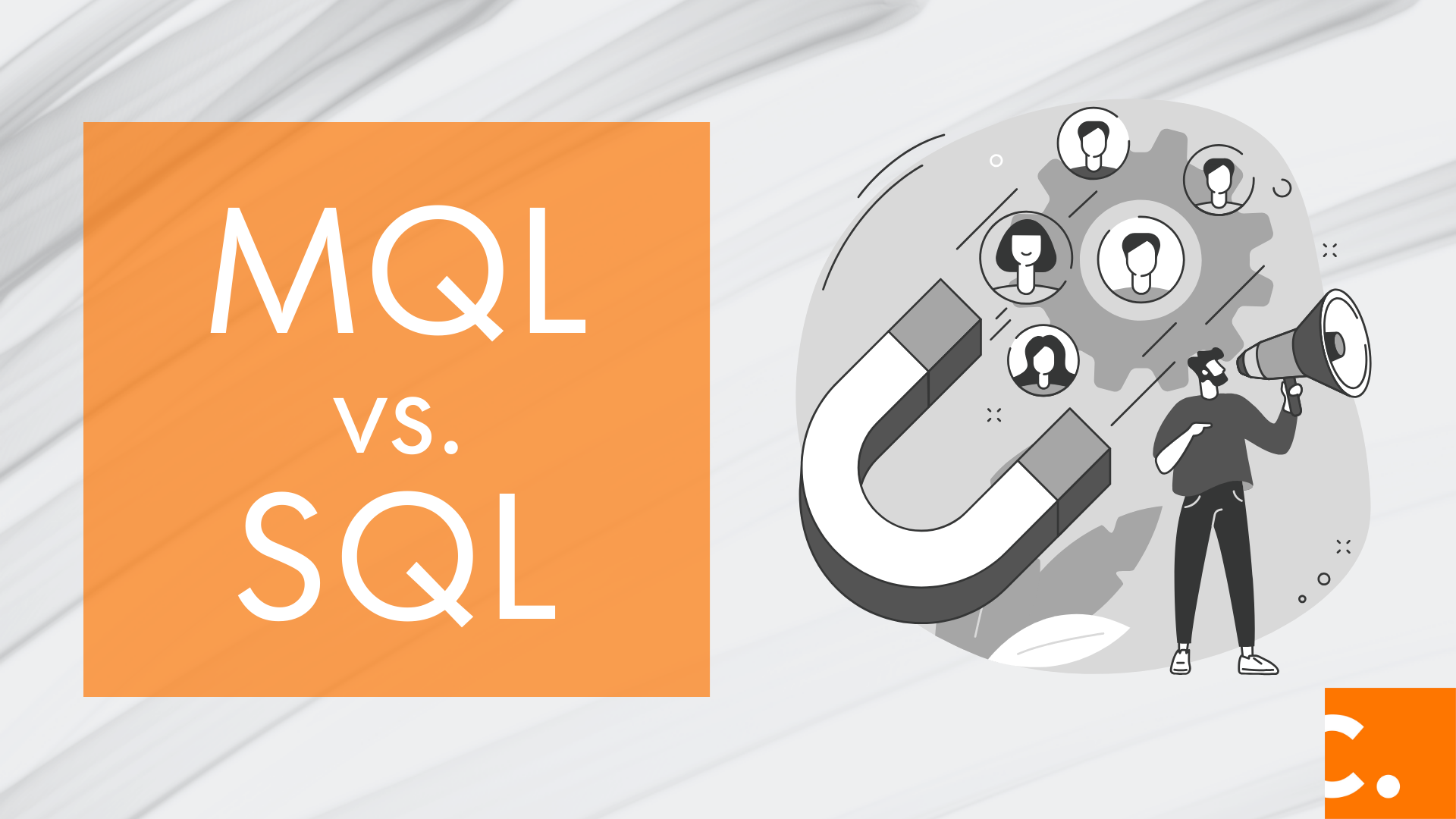Defining and Using MQLs and SQLs During Inbound & Outbound Lead Generation

The journey from capturing initial interest to sealing a deal involves several stages in lead management. When Concept sets up lead generation projects with our clients, we establish a clear understanding of strategies – inbound vs. outbound – and distinctions between leads, Marketing Qualified Leads (MQLs), and Sales Qualified Leads (SQLs). This is essential for goal setting, measuring success off of those goals, and aligning on overall strategy between sales and marketing teams. Let's delve deeper.
Defining Inbound & Outbound Leads

Inbound:
As the name suggests, these are leads that are coming into your team, product or offering. They express preliminary interest, without being subjected to direct outreach. They typically come in from a form fill, chatbot, call, walk-in, direct email, etc.

Outbound:
These are leads that have been identified as a potential right fit based on pre-defined criteria (e.g., Industry, Size, Geography, Persona, etc.), and generated in response to some form of outreach. Unlike inbound leads, outbound leads are actively sought out through proactive efforts, typically involving targeted research and list building.

MQLs (Marketing Qualified Leads):
These are leads that have exhibited a higher likelihood of conversion, based on their increased engagement with your marketing efforts. These individuals or entities have moved beyond the initial expression of interest and have interacted more deeply with your brand, typically via marketing email, website, ad, or content engagement.

SQLs (Sales Qualified Leads):
These are leads that have had some kind of interaction with prospecting efforts and are deemed ready for purchase, representing entities that are ripe for direct sales engagement. These leads have not only shown interest in your offerings but have also met specific criteria that align with the characteristics of a potential buyer, making them suitable candidates for direct sales outreach.
Our prospecting team can identify leads through targeted outreach or help filter through inbound leads to get the right contacts on your calendar. Let’s discuss how.
Watch Our Video Illustrating Lead Qualification Best Practices for MQLs and SQLs
Inbound Lead Generation Tactics
Content Marketing
This involves using content – gated and ungated - such as blogs, e-books, and webinars to draw leads who are seeking valuable information. To transition these leads into MQLs, offer content upgrades or in-depth materials in exchange for more detailed contact information, thereby deepening the engagement and signaling that higher level of interest.
SEO and SEM
By optimizing your SEO or utilizing search engine marketing, you ensure your business and offerings show at the top of search engines to drive traffic. Once you have driven them to your website, you can leverage tactics such as retargeting ads to nurture these leads into MQLs by showcasing valuable content or limited-time offers, leveraging their initial interest to drive them into your funnel.
Social Media
Similar making your brand and offerings seen at the top of search engines, creating engaging posts and interactive content on social media can help drive traffic and attract leads. Again, this traffic can be used to target them based on engagement and activity. This sort of activity tracking and retargeting becomes even easier when utilizing a marketing automation platform, like HubSpot.
Outbound Lead Generation Tactics
Cold Calling
Though traditional, it remains effective. Convert these leads into SQLs by not just presenting an initial proposition, but by asking the proper questions to qualify contacts and get the appropriate individuals and organizations in your sales pipeline.
Email Campaigns
By crafting targeted emails designed to capture the attention of a prospect, you can cover a lot of ground with your brand and messaging. Depending on the content, delivery method – one-to-one or marketing drip emails - and call-to-action you could move someone to MQL or even convert them to SQL.
Events & Trade Shows
Engaging face-to-face at an event or trade show is an excellent way to generate leads that are ripe for further engagement. Post-event follow-up with personalized content can drive these leads through their lifecycle, establishing a post-event relationship that extends beyond the initial handshake.
Tools for Converting MQLs to SQLs
Personalized Email Sequences
By using personalized email sequences, leveraging tools such as HubSpot or Salesloft, you can interact with a targeted list of contacts with a one-to-one appearance or marketing email blast. Again, depending on the content, delivery method – one-to-one or marketing drip emails - and call-to-action, you could move someone to MQL or even convert them to SQL.
Product Demonstrations or Trials
Seeing is believing. By providing an opportunity for leads to experience your product or service firsthand, offering trials or demonstrations allows them to understand the tangible benefits, moving them closer to the decision-making stage.
Sales Calls
Sometimes, there is nothing quite as effective as getting someone on the phone to talk it out and to discuss their specific needs. This personalized approach can transition an MQL to an SQL, providing a tailored and focused conversation that addresses their unique requirements.
Setting Your Teams Up for Success
Budgeting with Precision
Inbound strategies, like content creation or SEO, often involve upfront costs but can lead to organic, long-term results. Outbound tactics, such as cold calling or targeted ads, might have recurring costs but can yield faster results. Clarifying the mix you want can optimize spending and ensure that your efforts will help meet your organization's goals. Unsure about how to find this mix? Talk with our team about striking this balance.
Sales & Marketing Team Alignment
Different lead sources may require varied sales and marketing approaches. An inbound lead, which may need to be nurtured over time, might need a softer sales touch than an outbound lead, who could be expecting a direct proposition. Setting expectations ensures the sales and marketing teams use the right tactics and messaging.
Measuring for Success
The metrics for evaluating an inbound lead might focus on content engagement or organic reach, while outbound might emphasize response rate or meetings booked. By distinguishing lead type and source, accurate Key Performance Indicators (KPIs) can be set, providing a realistic campaign assessment. The best time to start planning for this reporting is before you start a project or outreach. This creates an honest evaluation of various efforts.
Lead generation is both an art and a science. As businesses navigate the twin realms of inbound and outbound strategies, clarity in tactics, progression methods, and desired outcomes is paramount. This is why we emphasize communication and dive into intricacies with every client, paving the path for a relationship that's both harmonious and results-driven. If this strikes a chord with you, let’s discuss opportunities between our teams.
Partner With Concept
Share your details and our team will reach out to discuss collaboration opportunities

